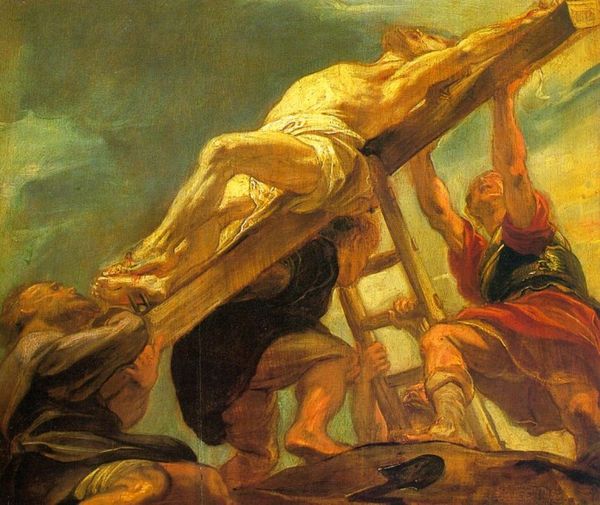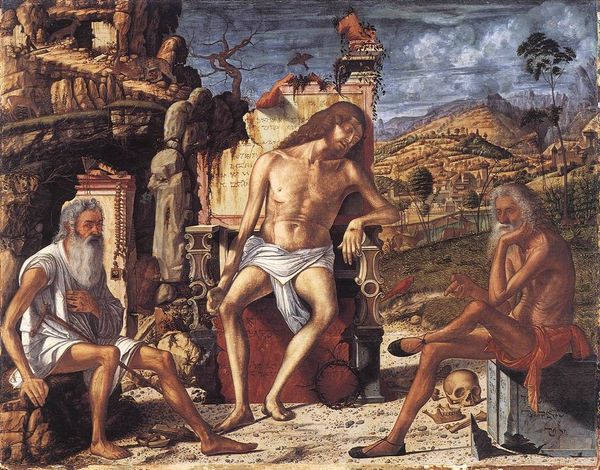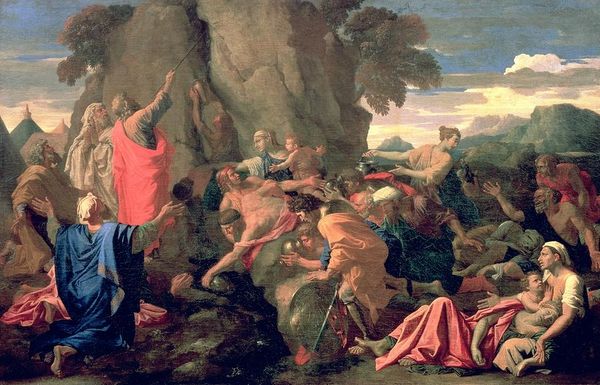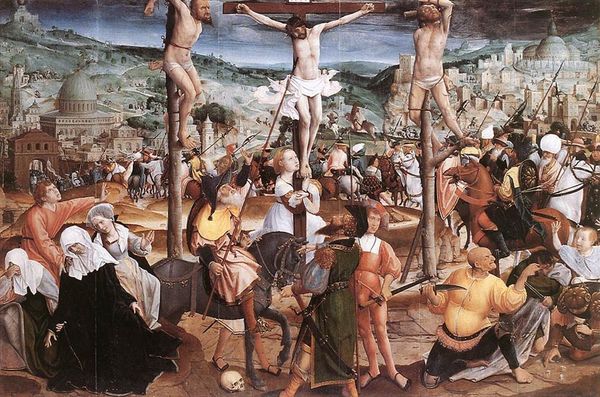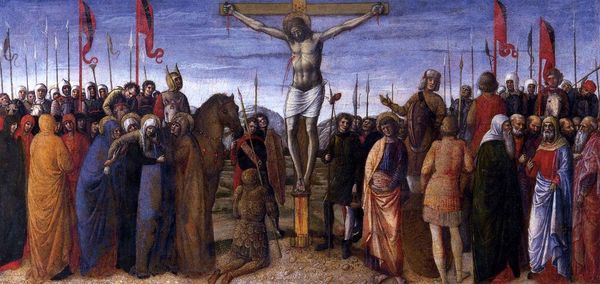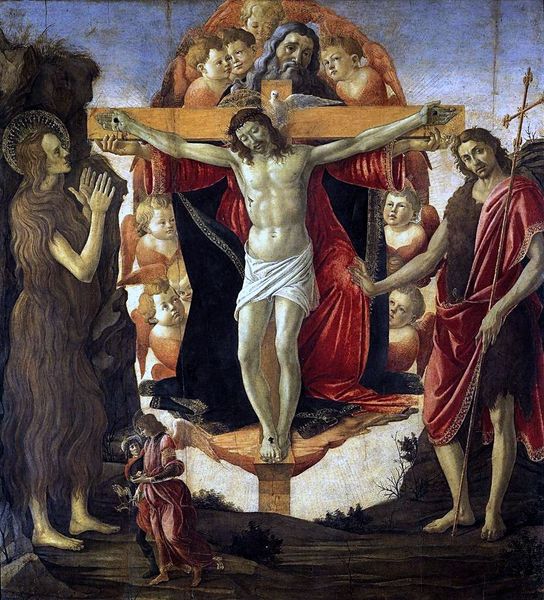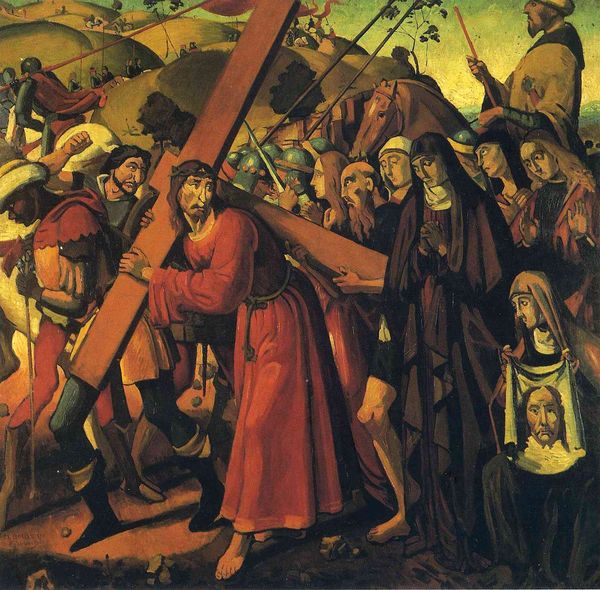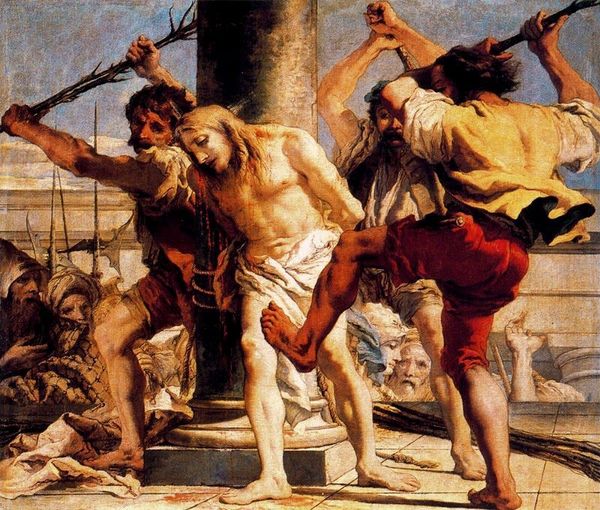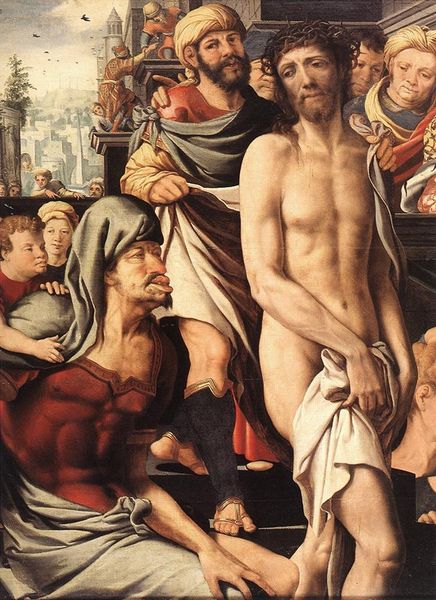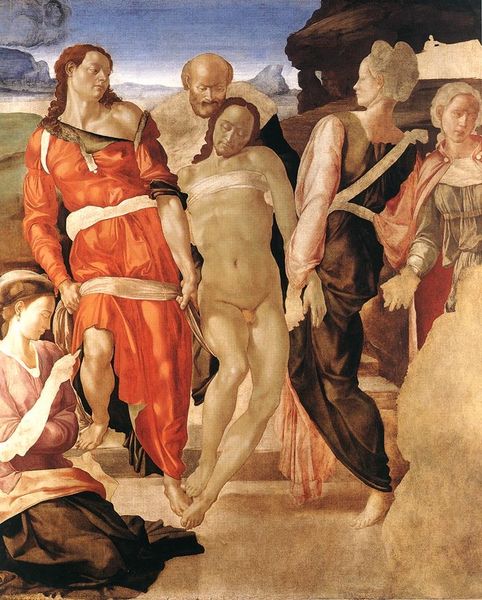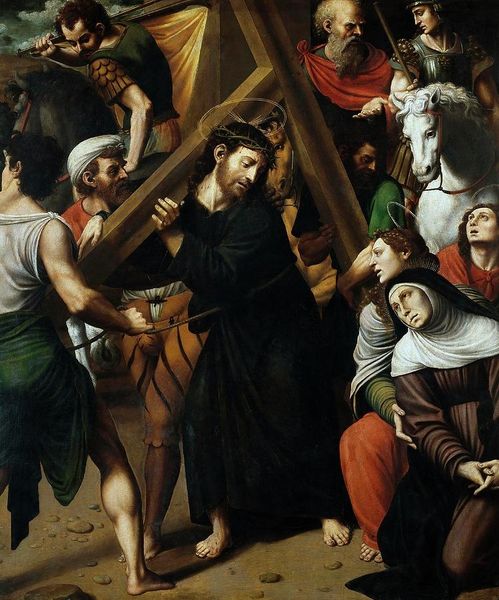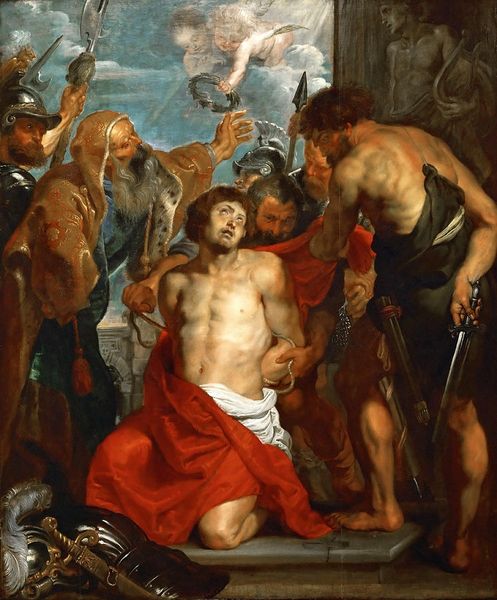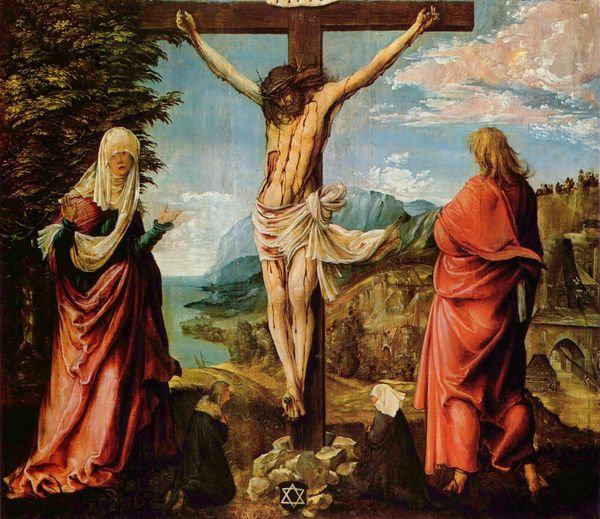
painting, oil-paint
#
high-renaissance
#
narrative-art
#
painting
#
oil-paint
#
figuration
#
oil painting
#
history-painting
#
italian-renaissance
Copyright: Public domain
Curator: Il Sodoma's “The Road to Calvary," painted around 1510, throws us headfirst into a chaotic swirl of bodies. What hits you first about it? Editor: The rawness. It’s less idealized than some High Renaissance depictions of the Passion. There's a grit to the figures, a desperate energy. Not quite gruesome, but honest about the physical ordeal. Curator: Precisely! Sodoma was playing with the High Renaissance style but never fully embraced that airbrushed perfection. Note the dynamism—Jesus struggling under the weight of the cross, surrounded by a motley crew. What might the artist want us to feel here? Editor: Maybe that even in sacred narratives, there are everyday experiences of trauma? I see social dimensions at play here too: consider the diversity, not just in the racialization, but in their garments and postures; power and precarity collide. There’s no collective unity or glory about the mob. The painting invites questions, who benefits? who suffers? Curator: Definitely a move beyond the purely devotional. Also consider Sodoma’s composition; rather than creating depth, it has that flattened stage-like feeling. There's this compressing sense of all the figures being mashed into the foreground. Do you find it effective, or perhaps a bit... awkward? Editor: It throws our viewing off-balance, and maybe that’s the point? By flouting the conventions of High Renaissance perspective, we focus more on the faces, the immediate expressions, and individual moments of pain. Also, I like how Sodoma includes diversity which speaks to contemporary, even if stereotyped, globalized racial mapping. Curator: True, those gazes hold your attention captive, the jeering, the straining, and the resignation on Jesus’ face. There’s something undeniably human in this crowded procession, far removed from the sanitized versions of suffering we often see. I always wondered whether Sodoma also implied resistance here in his raw take of this story. Editor: It’s in those individualized faces, isn’t it? Rather than reducing them to types, we see something closer to real lived experience and we confront the implications of systems that perpetuate marginality. So, yeah, for a religious painting, "The Road to Calvary" sparks some secular, tough questions. Curator: For me it leaves me considering how art is able to transcend a pure illustration of an ideal towards questioning those same principles of perfect illustration in the first place. Editor: And in Sodoma's own way, challenge, maybe even just a tiny bit, those power structures then and even today.
Comments
No comments
Be the first to comment and join the conversation on the ultimate creative platform.
